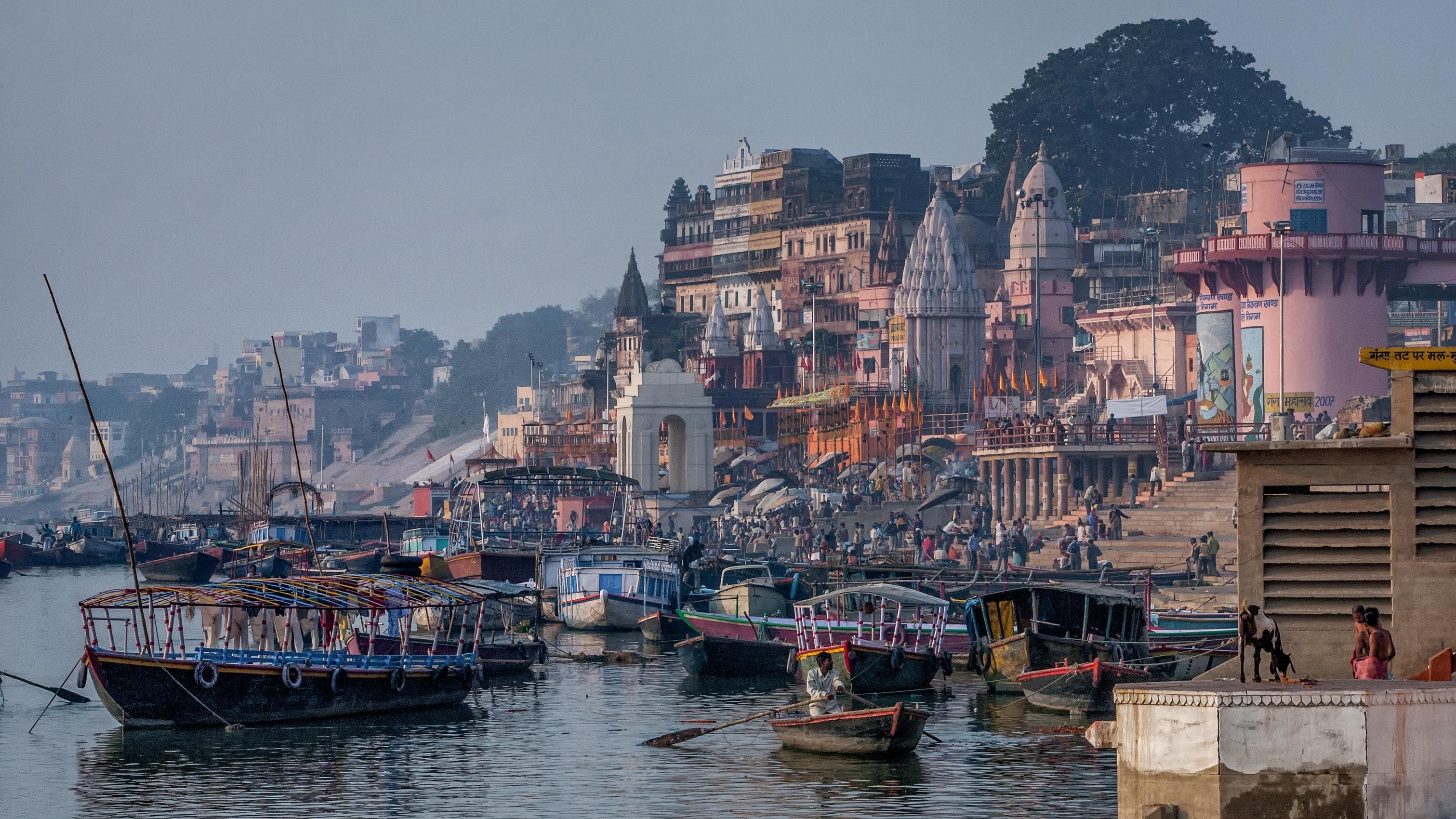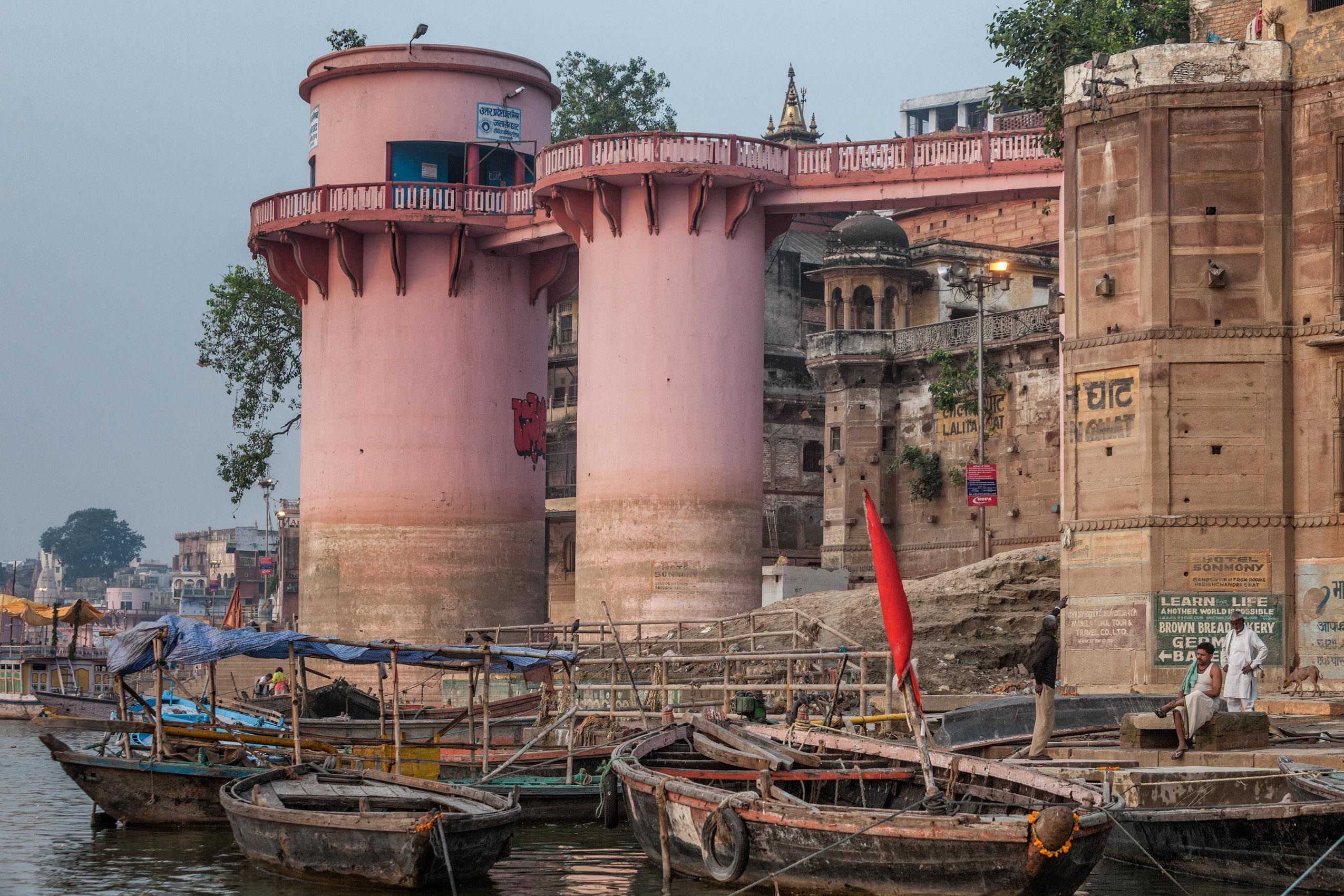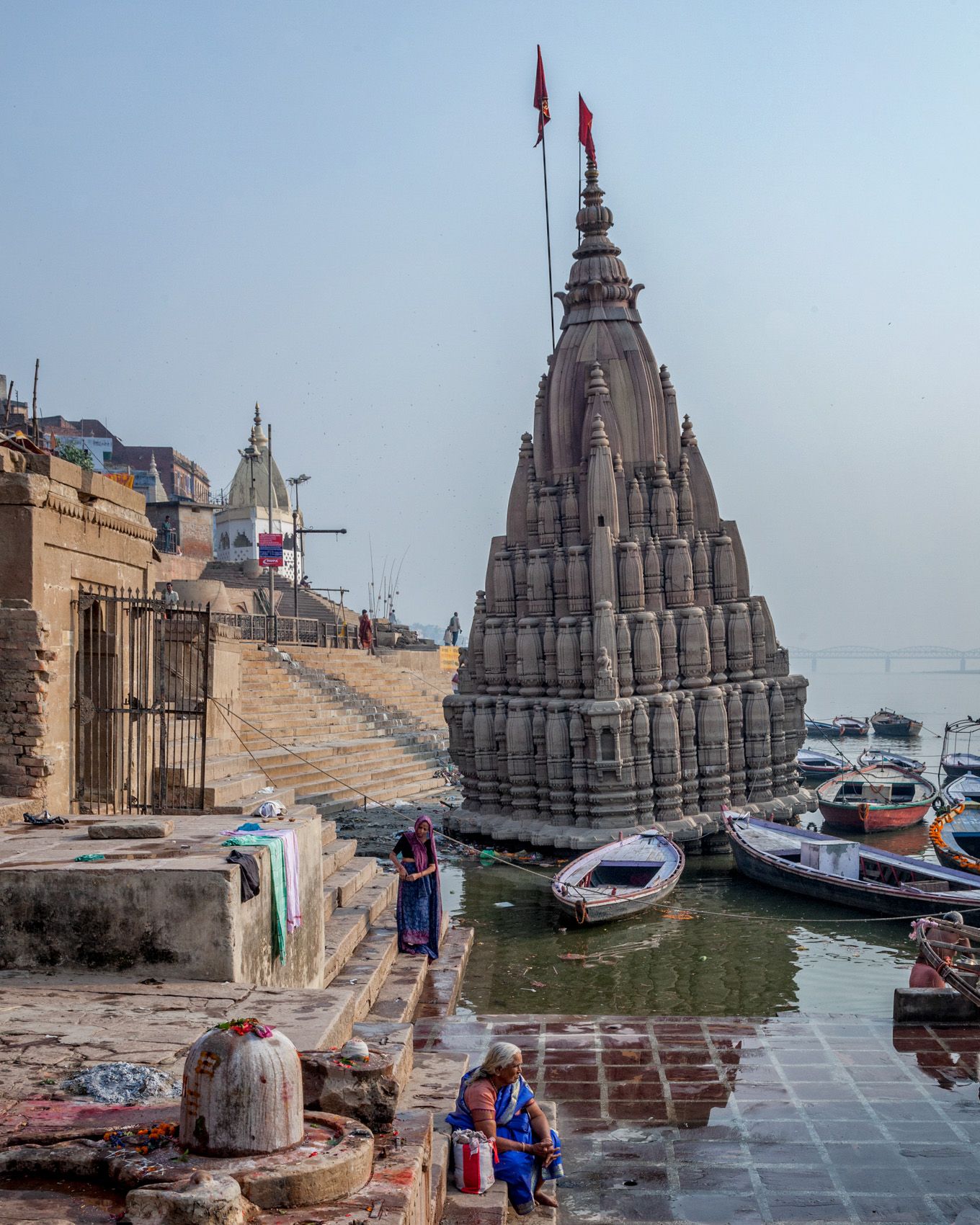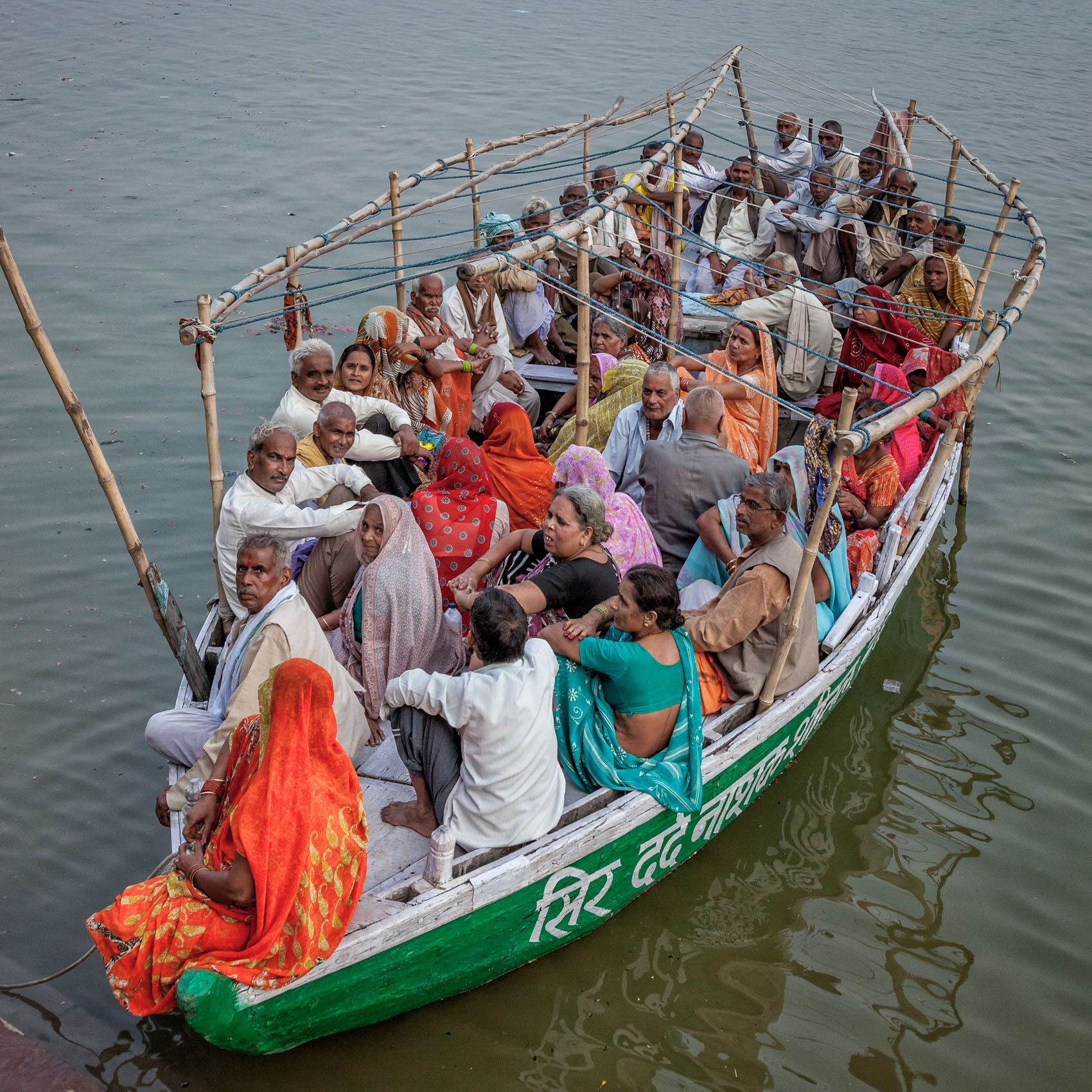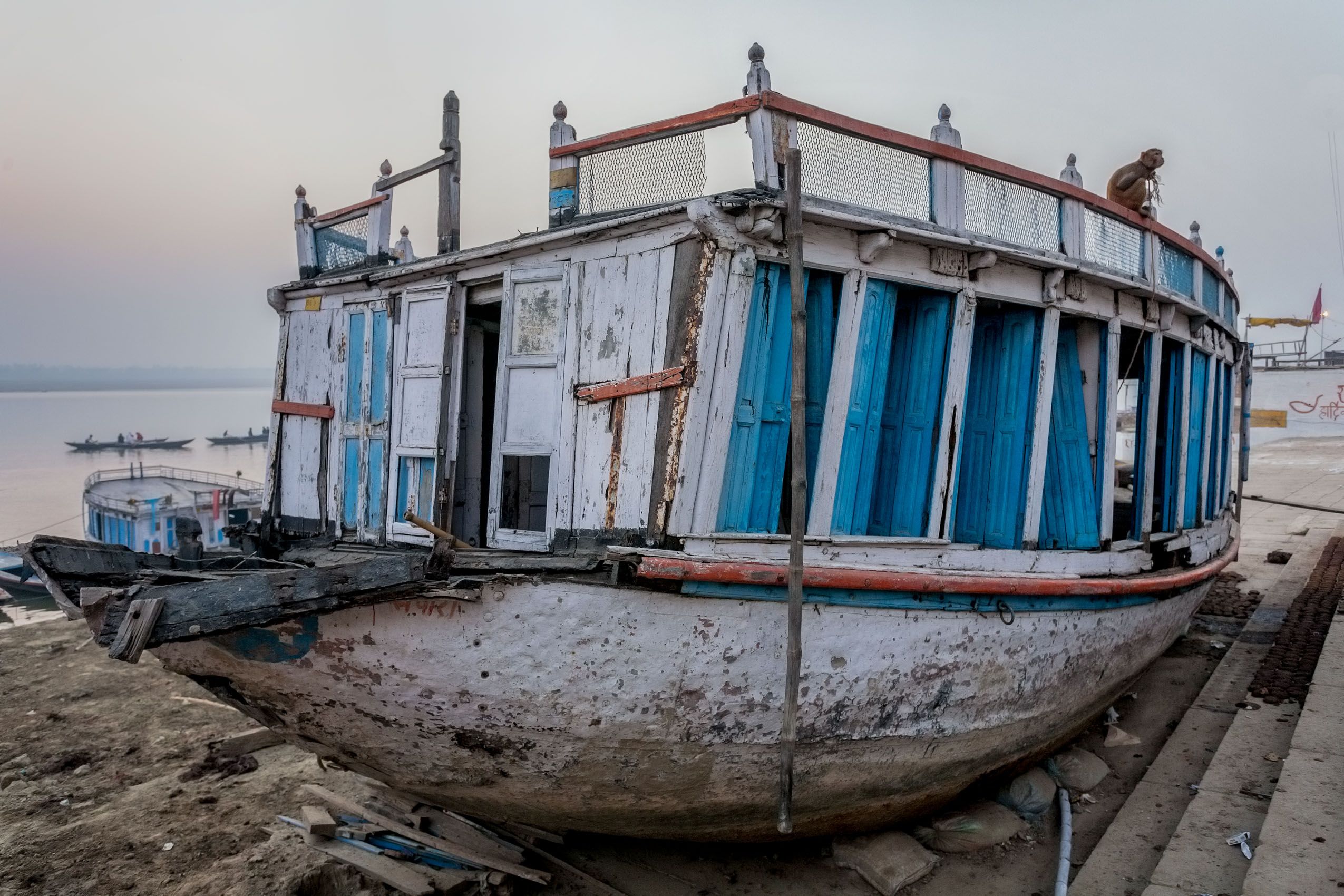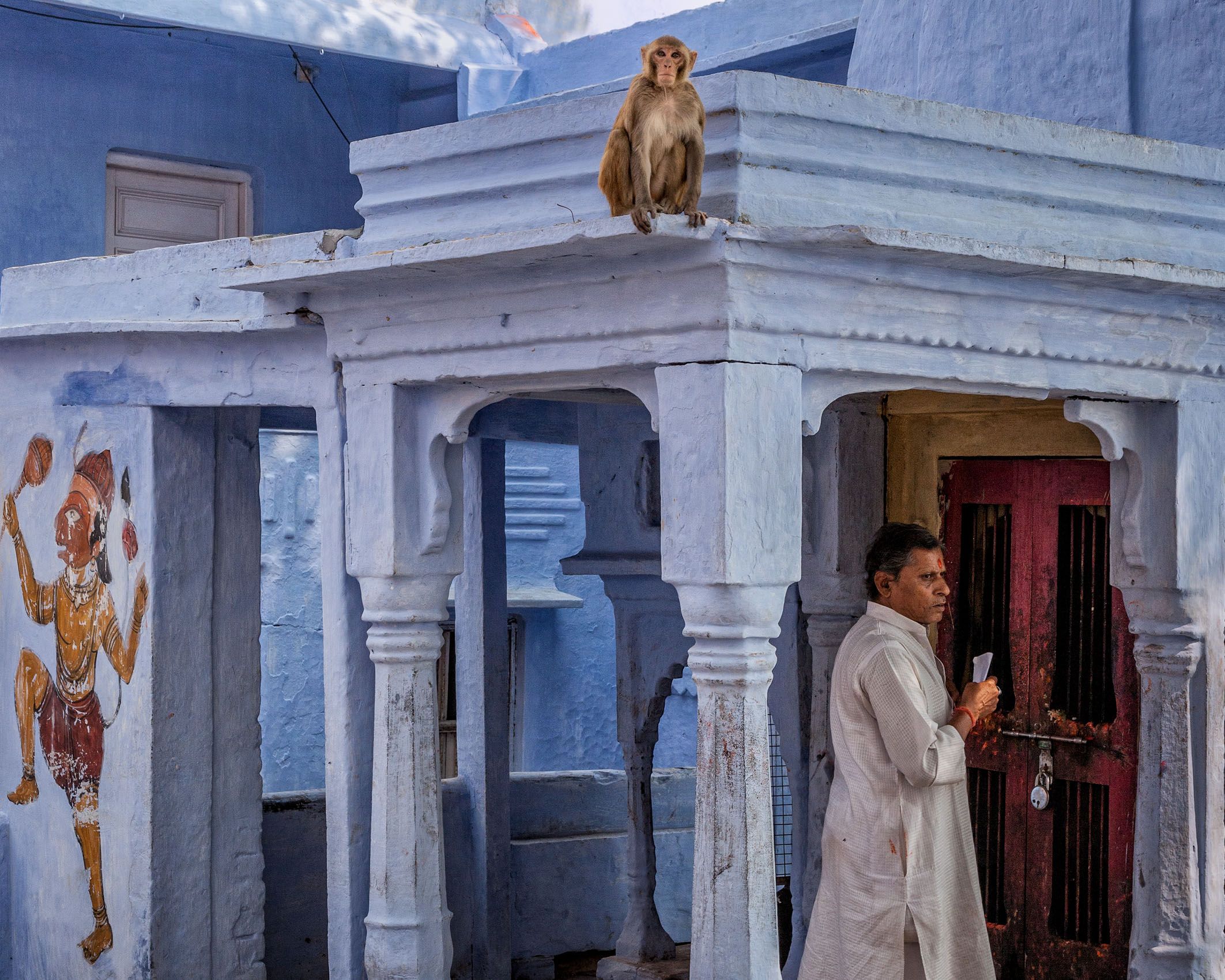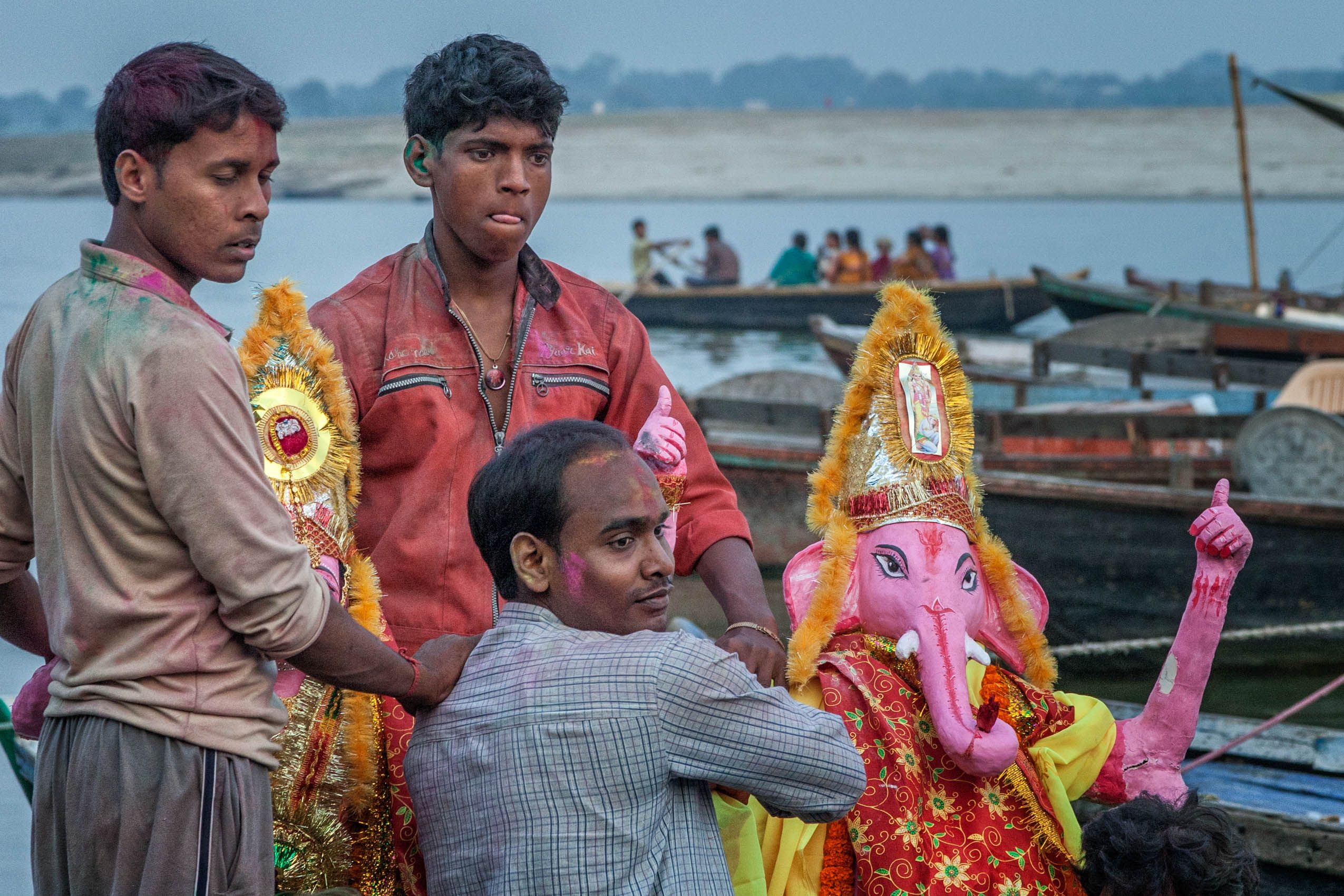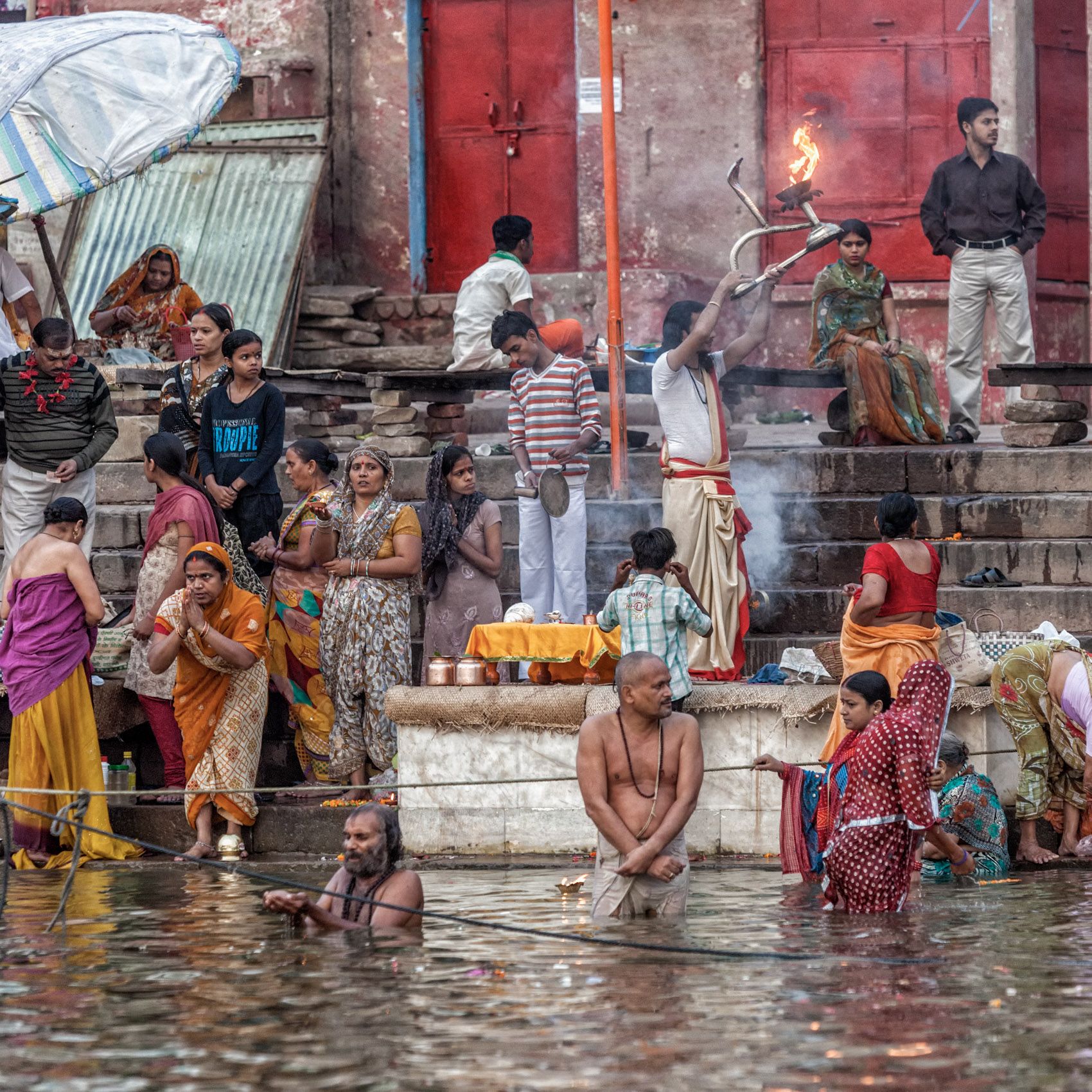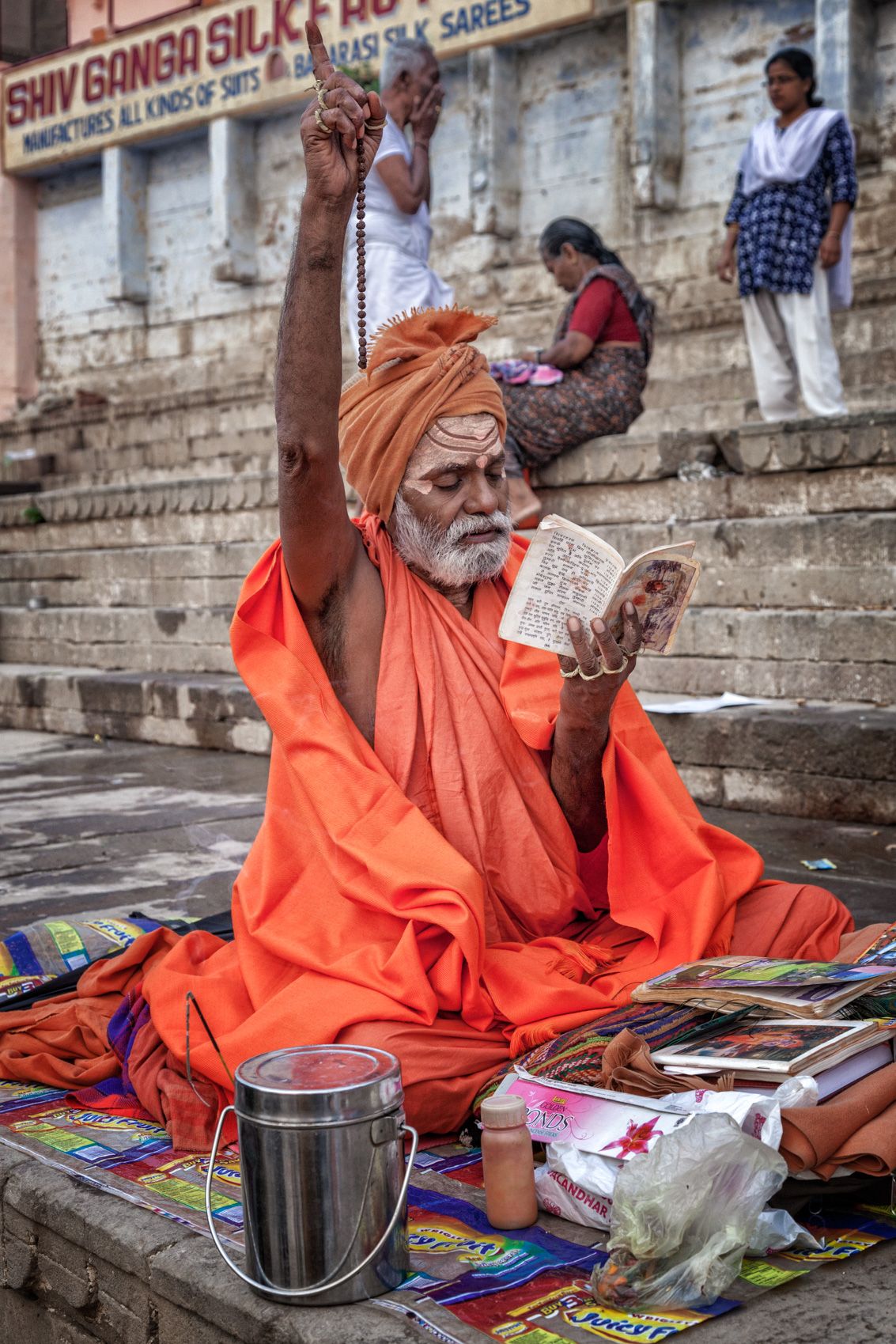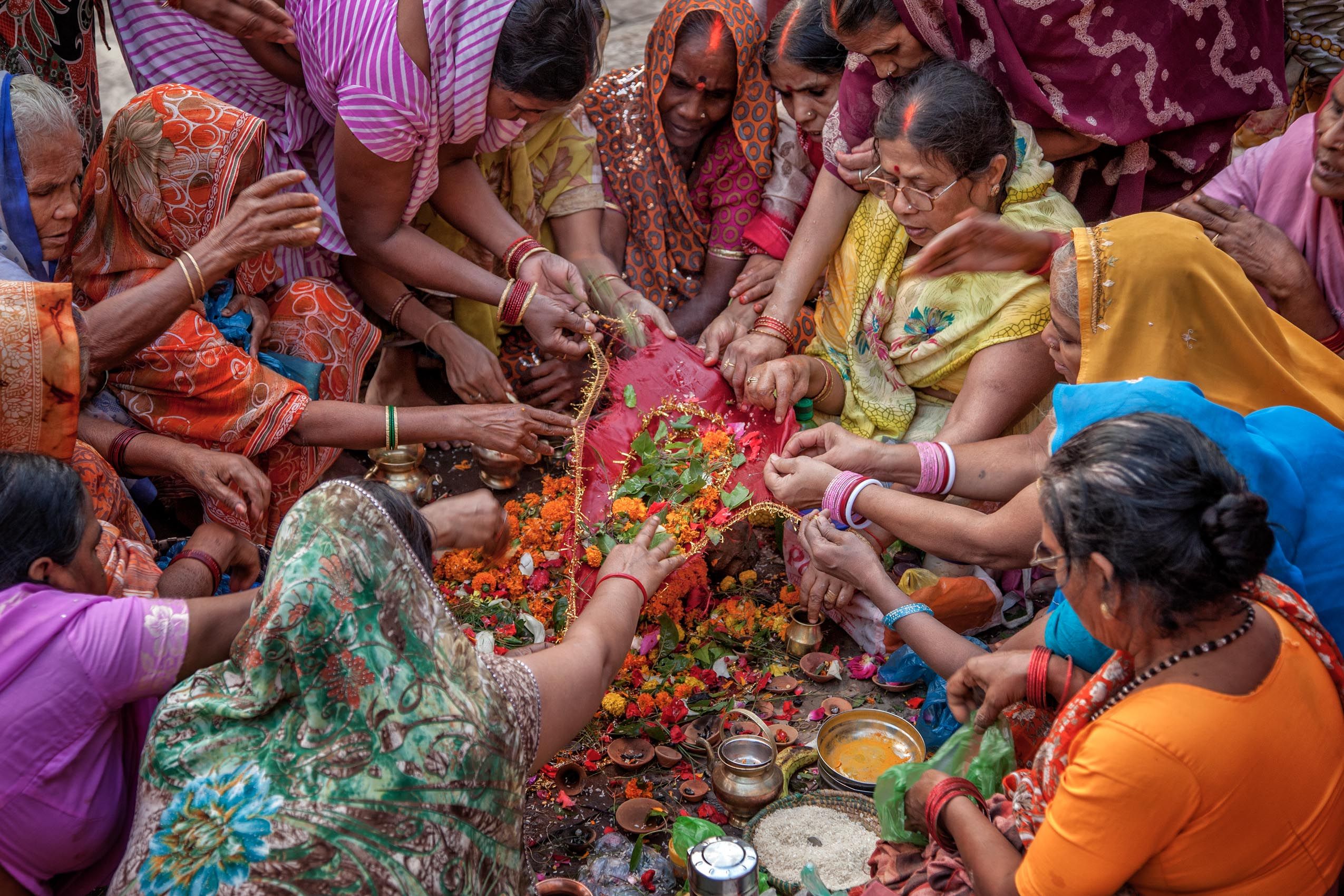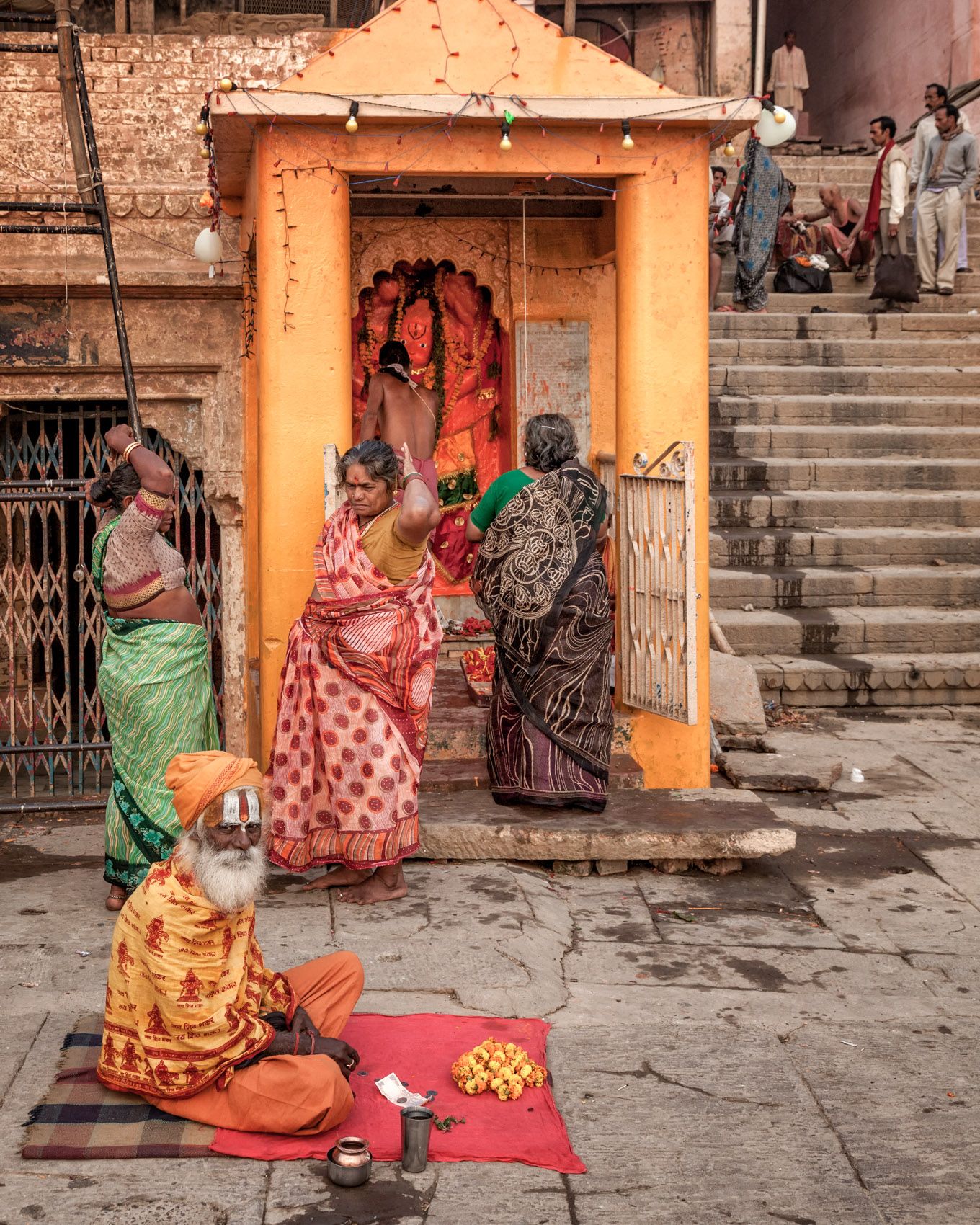On the Ghats of Varanasi, City of Light
Varanasi (formerly Benares, or Banaras) is one of the oldest continuously inhabited cities on earth, dating back at least two millenia BCE. Located along the northern bank of the Ganges in the state of Uttar Pradesh, Varanasi is one of the seven holy cities of Hinduism and a major pilgrimage center. Nearby at Sarnath, the Buddha gave his first sermon around 528 BCE, and the city is also holy to Jains. Death and cremation here on the bank of the Ganges are believed by Hindus to confer liberation (moksha) from the cycles of death and rebirth. Flames and smoke from funeral pyres rise continuously from Manikarnika Ghat, the central place of cremation along the river. Pilgrimage and devotion are not only focused on the city’s many temples but also and primarily upon the sacred waters of the river itself. The stepped ghats that descend to the water are filled with devotees from early morning until night, engaged in ritual bathing, prayer, the making of offerings, and consultation with the many mendicant Hindu holy men who reside or visit here. At sunrise and sunset, priests perform fire ceremonies (aarti) in devotion to Ganga, the goddess/river; the most spectacular of these is at Dashashwamedh Ghat. Hindus also call Varanasi, Kashi—the luminous, the city of light, because it is said that at this spot the great god Shiva and his consort Shakti began the creation of the universe, even before Ganga plunged from the heavens to the earth.

